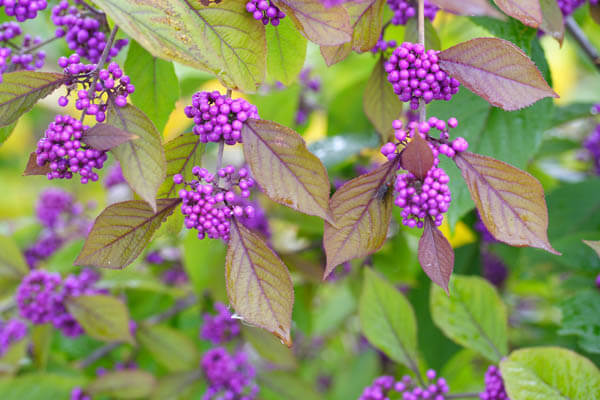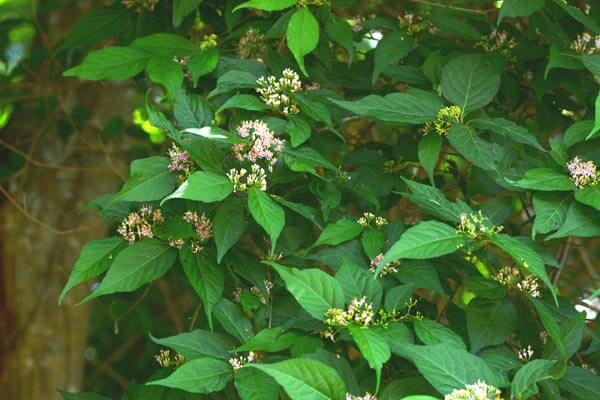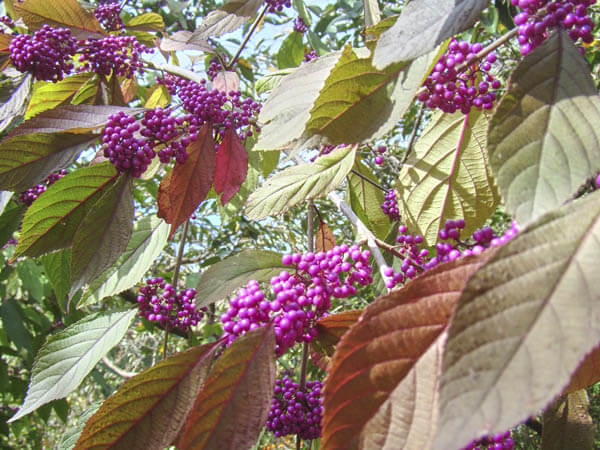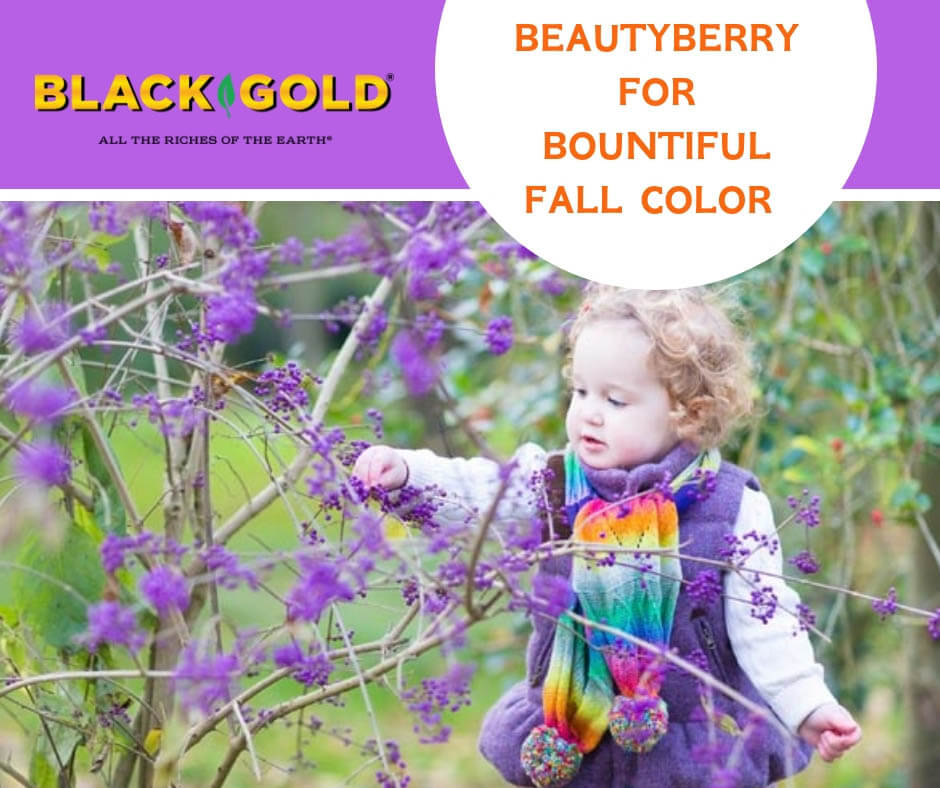Branches laden with bright purple berry clusters can be a very pleasant surprise to those unaware of the virtues of beautyberry (Callicarpa spp.). These berries provide a bright spot of color, especially in the autumn garden when the color performance of many shrubs is over.
Beautyberry Origins
There are more than a dozen species of Callicarpa, however only a few are readily available to at plant nurseries. Most often referred to as beautyberry, most species are native to China and other parts of Asia, but Callicarpa americana is a native of the southern and eastern United States. All grow and flower best in full to partial sun and prefer soil with average fertility and good drainage.
Beautyberry Varieties

Here in the Pacific Northwest, the most widely planted variety is the Chinese Bodinier’s beautyberry (Callicarpa bodinieri var. giraldii ‘Profusion’, USDA Hardiness Zone 6-8). This is recommended because it is a heavy bearer of bright purple berries. In the spring the new leaves are tinged with bronze as they first appear, and the branches become lined with clusters of tiny lavender flowers. In my garden, it tends to be a bit of a gangly grower, reaching up to 7 feet tall and almost as wide. Select pruning of the tallest, most overgrown branches will keep it in check.
I also have a white Japanese beautyberry (Callicarpa japonica ‘Leucocarpa’, USDA Hardiness Zone 5-8), which has white flowers and berries and is a slightly smaller shrub (4-6 feet) than Bodinier’s beautyberry. In the autumn, as the foliage of ‘Leucocarpa’ begins to turn yellow and brown, the clusters of white berries create quite a color contrast.

There are new varieties Callicarpa that have been developed to offer colorful foliage and a compact growth habit. Variegated Japanese beautyberry (C. japonica ‘Snow Storm’, USDA Hardiness Zone 6-8), is a good example with leaves that are white at the beginning of the season and then becoming mottled with green as they develop. Unlike the gangly ‘Profusion’, ‘Snow Storm’ is a tidy, mounding shrub to 3 to 4 feet that is desirable for small gardens or containers. It has pink flowers and purple berries.
The American beautyberry (Callicarpa americana, USDA Hardiness Zone 6-10) is a larger shrub (6-9 feet) with a more informal, long, arching, open branches and of looser bright purple berry clusters. Plant it in more informal landscape settings.
Beautyberry Lore

Sometimes I marvel at what we do for our plants and what our plants do for us. I find it fascinating to read folklore about plant attributes and then test the folklore in real life. The American Beautyberry poses a good example of how lore can help today’s gardeners.
In the early part of the 20th century, farmers in northeastern Mississippi discovered that placing fresh crushed leaves of Callicarpa americana under the harness of draft animals, like horses and mules, helped keep biting insects away. This practice became known throughout the region, and people began crushing leaves on their own skin to keep mosquitoes away. People stopped using American Beautyberry with the dawn of insect sprays, so this practice was almost forgotten until recently. Recent research found Mosquito Bite Deterrent chemicals were present in the leaves of these plants. In fact, they showed significant repellent activity against mosquitoes. Maybe this could be called ‘folklore becomes reality’.
 Two years ago I conducted my own experiment with a neighbor that is interested in botanicals for medicinal purposes. We both rubbed leaves of my Bodinier’s beautyberry on our arms to see if they would repel mosquitoes. Sorry to report that the mosquitoes landed on both of us, because I had not realized that the mosquito repelling properties were from C. americana and not my variety!
Two years ago I conducted my own experiment with a neighbor that is interested in botanicals for medicinal purposes. We both rubbed leaves of my Bodinier’s beautyberry on our arms to see if they would repel mosquitoes. Sorry to report that the mosquitoes landed on both of us, because I had not realized that the mosquito repelling properties were from C. americana and not my variety!
Visit your local garden center this fall season and check out their selection of berried Callicarpa. By making your purchase now, you are assured of getting the berry color that you want! With the long and hot dry summer we have had, be sure to amend the soil with Black Gold Garden Compost Blend before planting, and water thoroughly.


